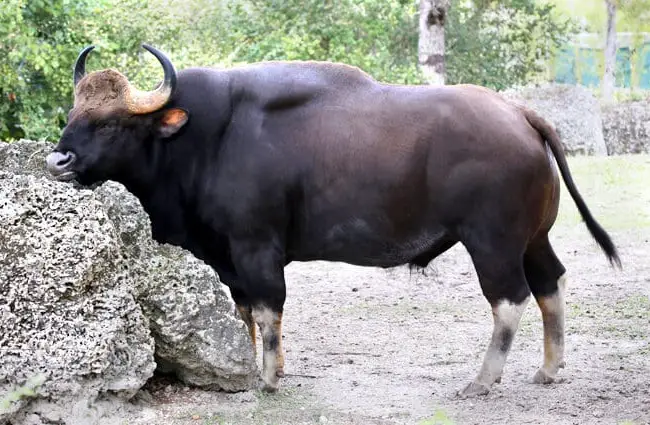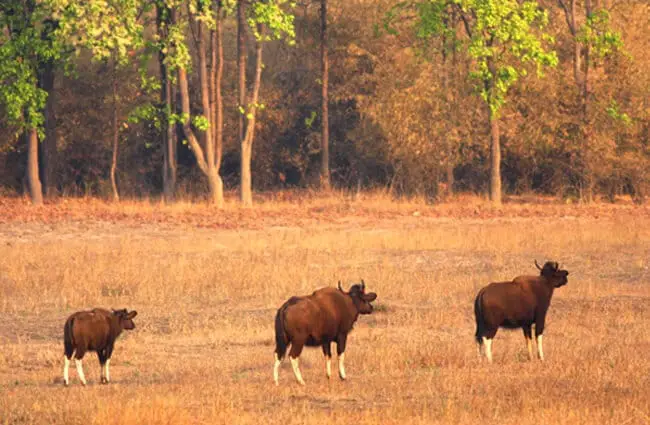The Magnificent Gaur: A Deep Dive into the Life of the Indian Bison
The gaur, Bos gaurus, often called the Indian bison, is a magnificent bovine native to South and Southeast Asia. More than just a large animal, the gaur plays a critical role in the ecosystems it inhabits and holds cultural significance in many regions. This article explores all facets of the gaur’s life, from its evolutionary history and ecological role to its interactions with humans and practical advice for those who may encounter it.

A Glimpse into Gaur History and Evolution
Tracing the Ancestry
The gaur belongs to the Bovidae family, which encompasses cattle, buffalo, antelopes, and goats. Fossil evidence suggests that the ancestors of modern gaur roamed the Asian continent millions of years ago. The gaur is most closely related to other Asian bovines like the banteng, yak, and water buffalo. Researchers believe that the gaur lineage diverged from its closest relatives during the Pleistocene epoch, adapting to the specific environmental conditions of South and Southeast Asia.
Subspecies and Distribution
Currently, there are several recognized subspecies of gaur, differing slightly in size, coloration, and geographic range. These include the Indian gaur (Bos gaurus gaurus), the Malaysian gaur (Bos gaurus malayanus), and the Burmese gaur (Bos gaurus perplexus). Their historical range spanned across much of South and Southeast Asia, but habitat loss and hunting have fragmented their populations. Today, they are primarily found in India, Nepal, Bhutan, Bangladesh, Myanmar, Thailand, Malaysia, and parts of China.
Habitat and Ecology
Preferred Environments
Gaurs are creatures of the forest and grasslands. They typically inhabit evergreen and semi evergreen forests, moist deciduous forests, and tall grasslands, usually within elevations of 300 to 1800 meters. They require areas with abundant water sources and a continuous supply of forage. They avoid dense, closed canopy forests, preferring areas with a mix of open spaces and forest cover. The availability of salt licks is also crucial for their dietary needs.
Diet and Feeding Habits
Gaurs are herbivores, and their diet consists primarily of grasses, bamboo shoots, leaves, fruits, and shrubs. They are bulk feeders, consuming large quantities of vegetation daily. During the dry season, they rely more on browse, leaves and shoots from trees and shrubs. They often graze in the early morning and late afternoon, seeking shade during the hottest parts of the day. Their feeding patterns influence vegetation structure and composition, playing a role in seed dispersal and forest regeneration.

Social Behavior and Reproduction
Herd Dynamics
Gaurs are typically found in small herds ranging from 8 to 30 individuals, often led by a dominant adult female. These herds usually consist of related females and their offspring. Adult males tend to be solitary or form small bachelor groups, only joining herds during the mating season. Communication within herds relies on vocalizations, scent marking, and body language. They establish a dominance hierarchy, influencing access to resources and mating opportunities.
Mating and Calving
The mating season typically occurs between May and July. Males compete for access to females through displays of strength and aggression. A successful male will mate with multiple females within the herd. Gestation lasts approximately 280 to 285 days, and females usually give birth to a single calf between November and April. Calves are precocial, meaning they are relatively mature at birth and can walk shortly after. Mothers provide extended care, nursing their calves for several months and protecting them from predators.
Ecological Role and Interactions
Keystone Species
Gaurs play a crucial role in maintaining the health of their ecosystems. As large herbivores, they influence vegetation structure and composition, creating habitat for other species. Their grazing patterns promote biodiversity, and their dung provides nutrients for plant growth. By dispersing seeds through their droppings, they contribute to forest regeneration. They also serve as prey for large predators such as tigers, leopards, and dholes, contributing to the food web’s balance.
Relationships with Other Animals
Besides predator prey relationships, gaurs interact with other species in various ways. They often coexist with other herbivores like deer and wild pigs, sharing resources and influencing vegetation patterns. They sometimes associate with birds like bulbuls and mynahs, which feed on insects disturbed by their grazing. They compete with livestock for grazing areas, leading to conflicts with humans.

Gaurs and Humans: A Complex Relationship
Cultural Significance
Gaurs hold cultural importance in many parts of Asia. In some regions, they are revered as symbols of strength, courage, and fertility. They are depicted in ancient art, folklore, and religious ceremonies. In certain cultures, their horns and other body parts are used in traditional medicine, though this practice is increasingly discouraged due to conservation concerns.
Conservation Challenges and Efforts
Gaurs are currently listed as Vulnerable by the International Union for Conservation of Nature (IUCN). Their populations have declined due to habitat loss, poaching, and human wildlife conflict. Protecting their remaining habitat is crucial for their survival. Conservation efforts include establishing protected areas, combating poaching, and implementing community based conservation programs. Reducing human wildlife conflict through mitigation measures like fencing and compensation schemes is also essential.
Encountering Gaurs in the Wild: Safety Guidelines
If you encounter a gaur in the wild, it’s crucial to maintain a safe distance and avoid provoking the animal. Here are some guidelines:
- Stay calm and avoid sudden movements.
- Do not approach the animal.
- Give the gaur plenty of space to move around.
- If the animal appears agitated, slowly back away.
- Never try to feed the animal.
- If you are with a group, stay together.
- Report any aggressive behavior to local authorities.
Caring for Gaurs in Captivity
Zookeepers caring for gaurs need to provide a spacious enclosure that mimics their natural habitat, including areas for grazing, browsing, and resting. A balanced diet consisting of grasses, hay, leaves, and supplementary feed is essential. Regular veterinary care, including vaccinations and parasite control, is crucial. Enrichment activities, like providing browse and puzzle feeders, can stimulate their mental and physical wellbeing. Avoid overcrowding and ensure the animals have access to shelter from the elements.

Fascinating Gaur Facts
- Gaurs are the largest species of wild cattle in the world.
- Males can weigh up to 1,500 kilograms (3,300 pounds).
- They have a distinctive white stocking on their legs.
- Gaurs are strong swimmers and often use water to cool off.
- They can live up to 25 years in the wild.
- Calves are reddish brown in color and darken as they mature.
Conclusion
The gaur is a magnificent creature that plays a vital role in the ecosystems it inhabits. By understanding its history, ecology, and behavior, we can appreciate its importance and work towards its conservation. Through continued research, habitat protection, and community engagement, we can ensure that future generations will be able to marvel at the majesty of the Indian bison.


![Red Angus Closeup of a beautiful Red Angus cowPhoto by: U.S. Department of Agriculture [pubic domain]https://creativecommons.org/licenses/by/2.0/](https://animals.net/wp-content/uploads/2020/03/Red-Angus-4-238x178.jpg)




![Red Angus Closeup of a beautiful Red Angus cowPhoto by: U.S. Department of Agriculture [pubic domain]https://creativecommons.org/licenses/by/2.0/](https://animals.net/wp-content/uploads/2020/03/Red-Angus-4-100x75.jpg)

